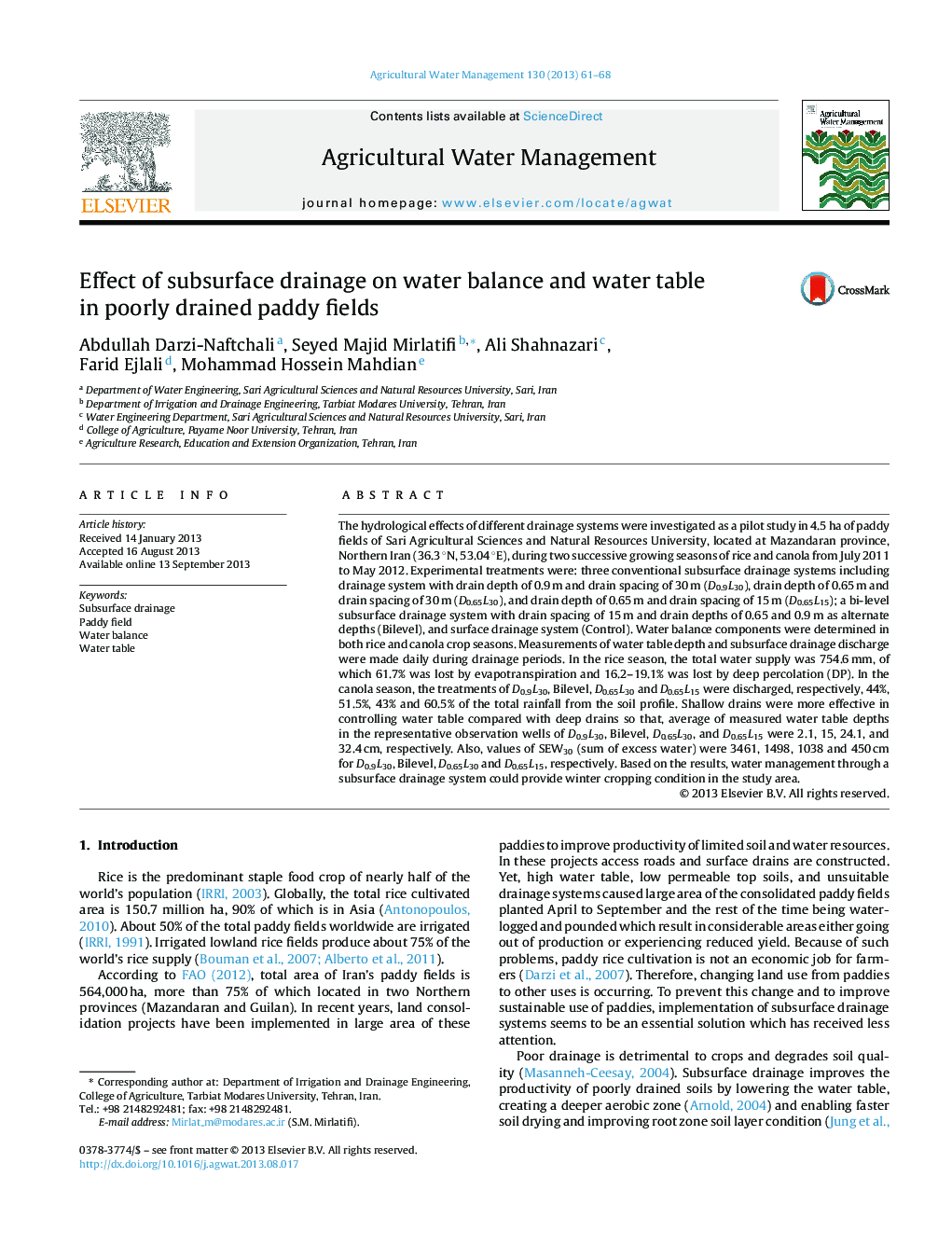| کد مقاله | کد نشریه | سال انتشار | مقاله انگلیسی | نسخه تمام متن |
|---|---|---|---|---|
| 4478669 | 1622949 | 2013 | 8 صفحه PDF | دانلود رایگان |

• A significant part of the water applied in paddy field is lost by deep percolation and drainage.
• Midseason drainage will increase deep percolation in subsurface drained paddy fields.
• Construction of optimum subsurface drainage systems balances properly between deep percolation and drainage losses.
The hydrological effects of different drainage systems were investigated as a pilot study in 4.5 ha of paddy fields of Sari Agricultural Sciences and Natural Resources University, located at Mazandaran province, Northern Iran (36.3 °N, 53.04 °E), during two successive growing seasons of rice and canola from July 2011 to May 2012. Experimental treatments were: three conventional subsurface drainage systems including drainage system with drain depth of 0.9 m and drain spacing of 30 m (D0.9L30), drain depth of 0.65 m and drain spacing of 30 m (D0.65L30), and drain depth of 0.65 m and drain spacing of 15 m (D0.65L15); a bi-level subsurface drainage system with drain spacing of 15 m and drain depths of 0.65 and 0.9 m as alternate depths (Bilevel), and surface drainage system (Control). Water balance components were determined in both rice and canola crop seasons. Measurements of water table depth and subsurface drainage discharge were made daily during drainage periods. In the rice season, the total water supply was 754.6 mm, of which 61.7% was lost by evapotranspiration and 16.2–19.1% was lost by deep percolation (DP). In the canola season, the treatments of D0.9L30, Bilevel, D0.65L30 and D0.65L15 were discharged, respectively, 44%, 51.5%, 43% and 60.5% of the total rainfall from the soil profile. Shallow drains were more effective in controlling water table compared with deep drains so that, average of measured water table depths in the representative observation wells of D0.9L30, Bilevel, D0.65L30, and D0.65L15 were 2.1, 15, 24.1, and 32.4 cm, respectively. Also, values of SEW30 (sum of excess water) were 3461, 1498, 1038 and 450 cm for D0.9L30, Bilevel, D0.65L30 and D0.65L15, respectively. Based on the results, water management through a subsurface drainage system could provide winter cropping condition in the study area.
Journal: Agricultural Water Management - Volume 130, December 2013, Pages 61–68